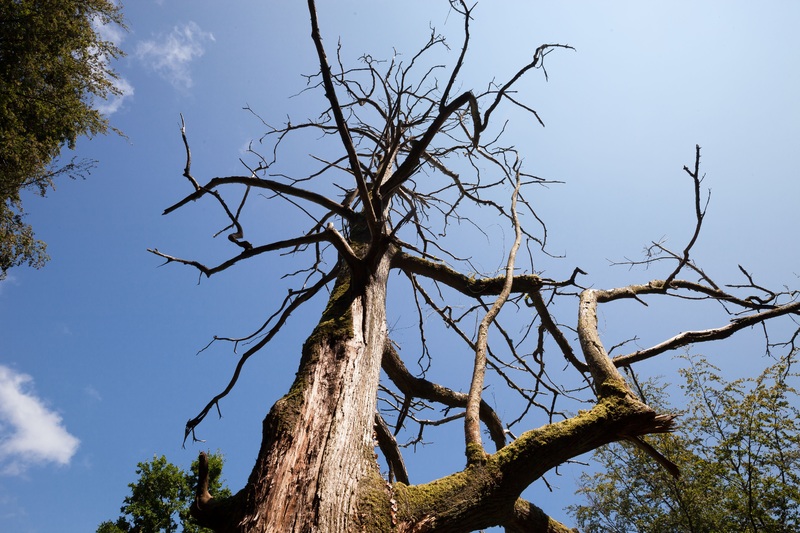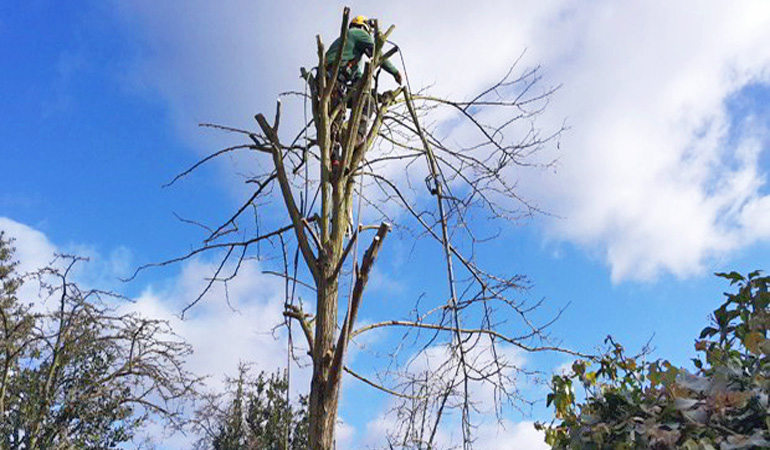Written by Ashley Mackenzie and published on https://homeguides.sfgate.com/.
In the fall, it’s no surprise to see leaves falling off of trees, quietly gathering into puddles which will soon be raked into glorious piles perfect for jumping into. But what happens if the trees themselves are dying too? Winter means hibernation for many creatures, and it’s easy to forget that trees are alive, too. So, if your tree is sick or dying, can you help it get better by cutting any dead branches? Let’s find out.

Table of Contents
Tree Care After Cutting Limbs
Trimming trees and removing branches create pruning wounds that take time to close. Extensive pruning also stunts trees’ growth. To avoid stressing your tree unnecessarily, you should limit pruning to what is necessary. Deciduous trees benefit from light annual trims, which encourage new growths that produce flowers, but otherwise, you should only prune branches to keep them away from power lines, increase air circulation and remove branches that are dead, diseased, or crossing each other. Afterward, you’ll need to provide your tree with careful attention to keep it healthy during the recovery process.
Basics of Recovery
When you cut tree branches, you create wounds that can act as open doors for the disease. To prevent this, trees naturally seal off wounds after pruning, though they don’t actually heal them. Instead, fresh tissue grows to cover the wounds, protecting them from decay and disease. If you remove a branch completely, you should leave the branch collar, which is the swollen area where the tree branch emerges from the trunk. This keeps the pruning wound manageable, whereas a flush-cut creates a larger wound that is more difficult for the tree to seal.
Wound Dressings
Though many gardeners used to apply wound dressings such as latex paint mixed with water to protect trees after pruning, current research has revealed that this is not beneficial. Wound dressings don’t prevent decay, disease, or insect infestations as once believed. They may even prevent the wood from drying, which can spark fungal growth. If you want to apply a wound dressing for cosmetic reasons, you should at least make sure the paint is nontoxic.
Post-Pruning Care
Immediately after pruning, trees appreciate a thorough helping of water to help them recover. You should continue watering regularly, increasing water during droughts to prevent water stress, as the water supports the new shoots that develop after pruning. You should also fertilize as usual to encourage new growths, including those that close old wounds. If the soil seems compacted, it’s smart to till the soil to promote air circulation.
After Rejuvenation Pruning
Rejuvenation pruning involves severely cutting back trees to reshape them and inspire new, healthy growths. Sometimes it takes two or three years to remove all of the branches that you want, as you should prune no more than one-third of the old branches each year to avoid stressing trees. After this type of heavy pruning, you should provide regular care but avoid applying nitrogen fertilizer for at least one to two years. Nitrogen encourages leafy growth, which can become excessive for established trees that have just undergone pruning to control this. A fertilizer with a 5-10-10 ratio of nitrogen, phosphorus, and potassium is appropriate.
Original post here https://homeguides.sfgate.com/tree-care-after-cutting-limbs-44674.html.

